Grow Basil from Seed and unlock a world of fresh, aromatic possibilities right in your own home! Have you ever dreamed of snipping fragrant basil leaves straight from your garden to elevate your pasta sauce or brighten up a summer salad? It’s easier than you think, and this DIY guide will show you exactly how to make that dream a reality.
Basil, with its rich history stretching back to ancient civilizations, has been revered for centuries not only for its culinary uses but also for its medicinal and even spiritual significance. From the royal gardens of ancient Greece to the sun-drenched fields of Italy, basil has always held a special place in our hearts and kitchens.
But why bother growing your own basil when you can just buy it at the store? Well, for starters, the flavor of homegrown basil is simply unmatched – it’s fresher, more vibrant, and bursting with essential oils. Plus, think of the satisfaction of nurturing a plant from a tiny seed to a thriving herb! In today’s world, where we’re all looking for ways to connect with nature and reduce our reliance on store-bought produce, learning to grow basil from seed is a simple yet powerful step towards a more sustainable and flavorful lifestyle. I’m excited to share my favorite tips and tricks to help you succeed, even if you’re a complete beginner. Let’s get started!
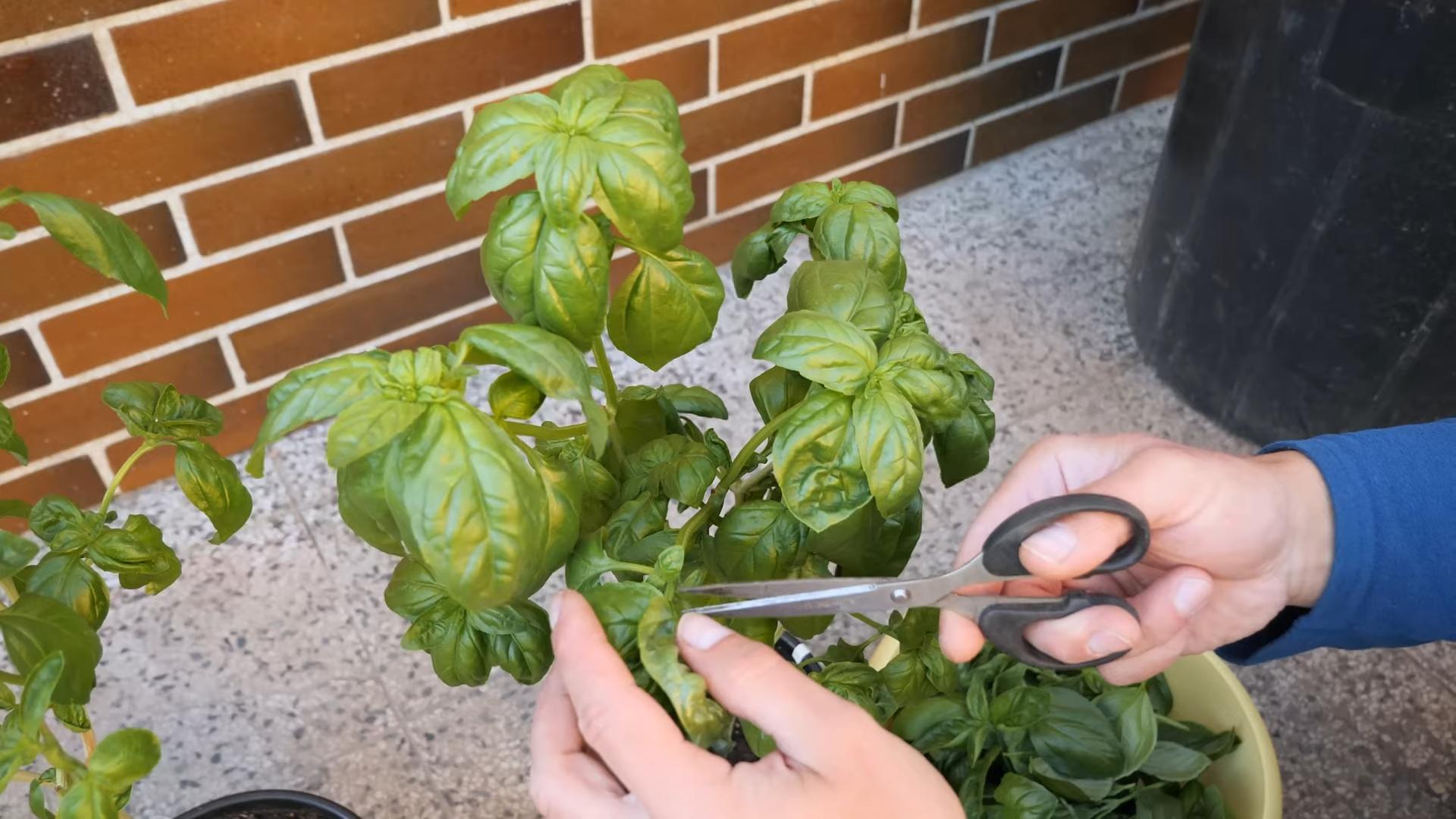
Growing Basil from Seed: A Comprehensive DIY Guide
Hey there, fellow plant enthusiasts! I’m so excited to share my tried-and-true method for growing lush, fragrant basil from seed. There’s nothing quite like the satisfaction of snipping fresh basil leaves from your own garden to add to your favorite dishes. Trust me, once you taste homegrown basil, you’ll never go back to the store-bought stuff! This guide will walk you through every step, from choosing the right seeds to transplanting your seedlings. Let’s get started!
Choosing Your Basil Seeds
Before we dive into the planting process, let’s talk about basil varieties. There are so many to choose from, each with its own unique flavor and characteristics. Here are a few of my favorites:
* Sweet Basil: This is the classic basil you find in most grocery stores. It has a sweet, slightly peppery flavor that’s perfect for pesto, pasta sauces, and salads.
* Genovese Basil: Similar to sweet basil, but with a slightly more intense flavor. It’s considered the gold standard for pesto.
* Thai Basil: This variety has a distinct anise or licorice flavor. It’s commonly used in Southeast Asian cuisine.
* Lemon Basil: As the name suggests, this basil has a refreshing lemon scent and flavor. It’s great in salads, teas, and desserts.
* Purple Basil: This basil adds a beautiful pop of color to your garden and has a slightly spicier flavor than sweet basil.
When choosing your seeds, make sure to purchase them from a reputable source. Look for seeds that are labeled as organic and non-GMO for the best results.
Gathering Your Supplies
To successfully grow basil from seed, you’ll need a few essential supplies:
* Basil seeds: Choose your favorite variety or try a mix of different types.
* Seed starting trays or small pots: These will provide a controlled environment for your seeds to germinate.
* Seed starting mix: This is a lightweight, sterile soil mix that’s specifically designed for starting seeds. Avoid using regular garden soil, as it can be too heavy and may contain pathogens.
* Spray bottle: For gently watering your seeds and seedlings.
* Heat mat (optional): Basil seeds germinate best in warm temperatures (around 70-80°F). A heat mat can help maintain a consistent temperature, especially if you’re starting your seeds indoors.
* Grow light (optional): If you’re starting your seeds indoors, a grow light will provide the necessary light for healthy growth.
* Small labels: To label your different basil varieties.
* Water: Use filtered or distilled water for best results.
Starting Your Basil Seeds Indoors
Starting your basil seeds indoors gives them a head start on the growing season, especially if you live in a colder climate. Here’s how to do it:
1. Prepare your seed starting trays or pots: Fill your trays or pots with seed starting mix, leaving about half an inch of space at the top. Gently tap the trays or pots to settle the soil.
2. Sow your seeds: Sprinkle a few basil seeds on top of the soil in each cell or pot. Basil seeds are very small, so don’t overcrowd them. I usually aim for 2-3 seeds per cell.
3. Cover the seeds: Lightly cover the seeds with a thin layer of seed starting mix. Basil seeds need light to germinate, so don’t bury them too deep.
4. Water the seeds: Gently mist the soil with a spray bottle until it’s evenly moist. Be careful not to overwater, as this can cause the seeds to rot.
5. Provide warmth and light: Place your seed starting trays or pots on a heat mat (if using) and under a grow light (if using). If you don’t have a heat mat or grow light, you can place them in a warm, sunny location.
6. Maintain moisture: Keep the soil consistently moist, but not soggy. Check the soil daily and mist with a spray bottle as needed.
7. Wait for germination: Basil seeds typically germinate in 5-10 days. Once the seedlings emerge, remove them from the heat mat (if using) and continue to provide them with plenty of light.
8. Thin the seedlings: Once the seedlings have developed their first set of true leaves (the leaves that look like miniature basil leaves), thin them out to one seedling per cell or pot. Use a small pair of scissors to snip off the weaker seedlings at the soil line.
Starting Your Basil Seeds Outdoors
If you live in a warm climate with a long growing season, you can start your basil seeds directly outdoors. Here’s how:
1. Choose a sunny location: Basil thrives in full sun, so choose a spot in your garden that receives at least 6-8 hours of sunlight per day.
2. Prepare the soil: Amend the soil with compost or other organic matter to improve drainage and fertility. Basil prefers well-drained soil that’s rich in nutrients.
3. Sow your seeds: Sow the seeds directly into the soil, spacing them about 12 inches apart. Lightly cover the seeds with soil and water gently.
4. Maintain moisture: Keep the soil consistently moist until the seedlings emerge.
5. Thin the seedlings: Once the seedlings have developed their first set of true leaves, thin them out to one seedling per 12 inches.
Transplanting Your Basil Seedlings
Once your basil seedlings have grown to be about 4-6 inches tall and have developed several sets of true leaves, they’re ready to be transplanted into larger pots or into your garden.
1. Harden off the seedlings: Before transplanting your seedlings outdoors, you’ll need to harden them off. This process gradually acclimates them to the outdoor environment and prevents them from getting shocked. To harden off your seedlings, start by placing them outdoors in a sheltered location for a few hours each day. Gradually increase the amount of time they spend outdoors over the course of a week or two.
2. Choose a sunny location: As mentioned earlier, basil thrives in full sun.
3. Prepare the soil: Amend the soil with compost or other organic matter to improve drainage and fertility.
4. Dig a hole: Dig a hole that’s slightly larger than the root ball of your seedling.
5. Remove the seedling from its pot: Gently remove the seedling from its pot, being careful not to damage the roots. If the roots are tightly bound, gently loosen them with your fingers.
6. Plant the seedling: Place the seedling in the hole and backfill with soil. Gently firm the soil around the base of the plant.
7. Water the seedling: Water the seedling thoroughly after planting.
8. Mulch around the plant: Mulch around the base of the plant with straw, wood chips, or other organic mulch to help retain moisture and suppress weeds.
Caring for Your Basil Plants
Once your basil plants are established, they’re relatively easy to care for. Here are a few tips:
* Water regularly: Basil plants need consistent moisture, especially during hot, dry weather. Water deeply whenever the soil feels dry to the touch.
* Fertilize occasionally: Fertilize your basil plants every few weeks with a balanced liquid fertilizer.
* Pinch off flower buds: Basil plants will eventually produce flowers, but flowering can reduce the flavor of the leaves. To encourage leafy growth, pinch off the flower buds as soon as you see them.
* Harvest regularly: Harvesting basil leaves regularly will encourage the plant to produce more leaves. Simply snip off the top leaves of the plant, leaving a few inches of stem.
* Protect from frost: Basil is sensitive to frost, so protect your plants if temperatures are expected to drop below freezing. You can cover them with a blanket or move them indoors.
Troubleshooting Common Basil Problems
Even with the best care, basil plants can sometimes encounter problems. Here are a few common issues and how to address them:
* Yellowing leaves: Yellowing leaves can be caused by overwatering, underwatering, nutrient deficiencies, or pests. Check the soil moisture and adjust your watering accordingly. Fertilize your plants with a balanced fertilizer. Inspect the leaves for pests and treat as needed.
* Brown spots: Brown spots on basil leaves can be caused by fungal diseases or pests. Remove any affected leaves and treat the plant with a fungicide or insecticide.
* Pests: Common basil pests include aphids, spider mites, and Japanese beetles. Inspect your plants regularly for pests and treat as needed with insecticidal soap or neem oil.
Enjoying Your Homegrown Basil
Now for the best part – enjoying the fruits (or rather, leaves) of your labor! Fresh basil is incredibly versatile and can be used in a wide variety of dishes. Here are a few ideas:
* Pesto
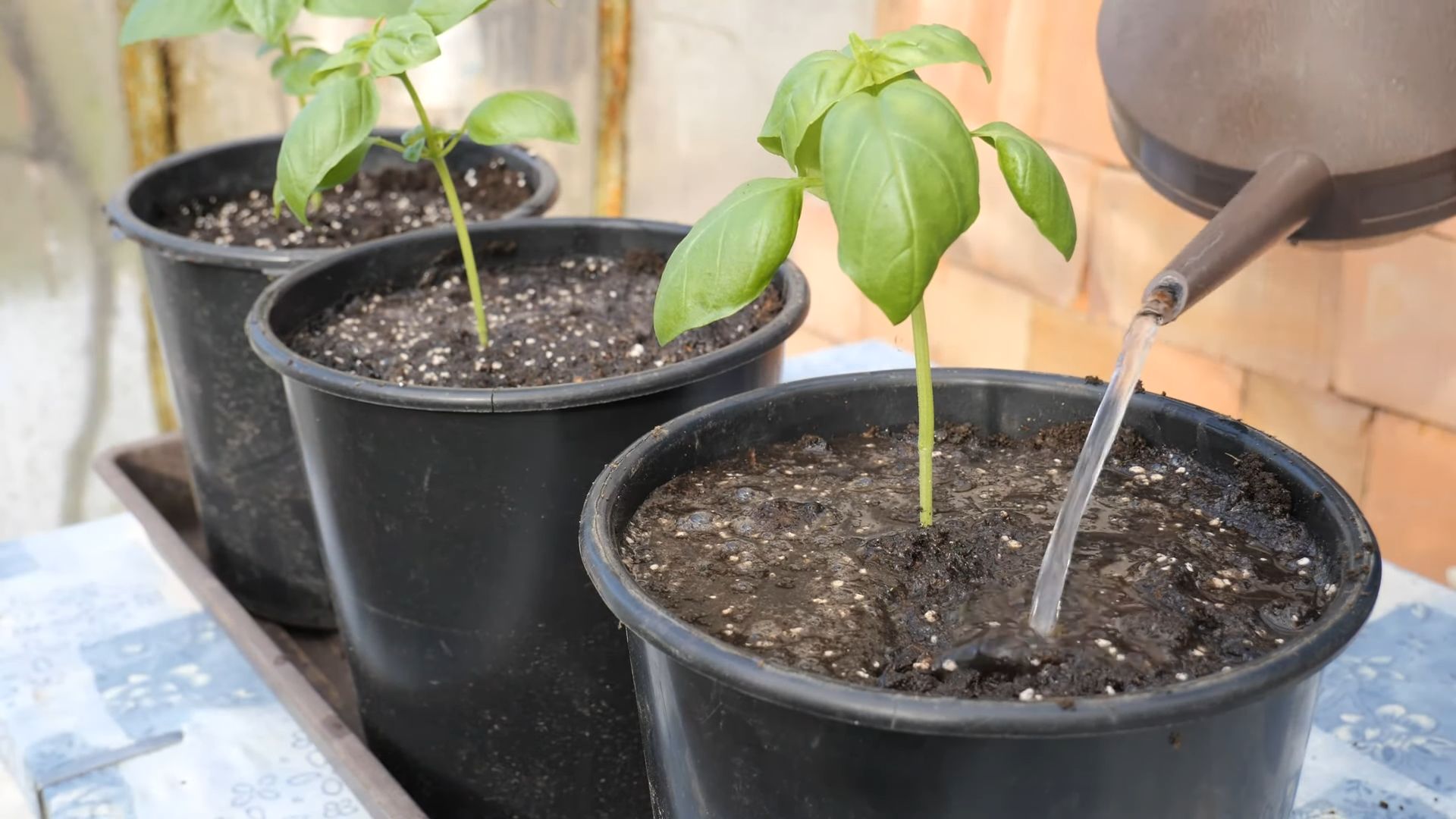
Conclusion
So, there you have it! Growing basil from seed isn’t just a way to save money; it’s a deeply rewarding experience that connects you to the food you eat. Imagine the satisfaction of snipping fresh, fragrant basil leaves from plants you nurtured from tiny seeds. The vibrant green, the intense aroma – it’s a sensory delight that store-bought basil simply can’t match. This DIY trick is a must-try for anyone who loves fresh herbs, enjoys gardening, or simply wants to add a touch of homegrown goodness to their meals.
Beyond the basic method, there’s a whole world of basil varieties to explore. Why not try growing Thai basil for its anise-like flavor, perfect for Southeast Asian dishes? Or perhaps lemon basil, with its citrusy notes, ideal for salads and teas? Genovese basil is a classic for pesto, while purple basil adds a beautiful visual element to your garden and dishes. Experiment with different varieties to discover your favorites and expand your culinary horizons.
Consider starting your seeds indoors even if you plan to transplant them outdoors later. This gives them a head start, especially in regions with shorter growing seasons. You can also use different types of seed starting trays or containers, from peat pots to recycled egg cartons. Just ensure they have adequate drainage.
Another variation to consider is succession planting. Sow a new batch of seeds every few weeks to ensure a continuous supply of fresh basil throughout the growing season. This is particularly useful if you use basil frequently in your cooking.
Don’t be intimidated if you’ve never grown anything from seed before. Basil is relatively easy to grow, and the process is incredibly fulfilling. The key is to provide the right conditions: warmth, light, and moisture. With a little patience and care, you’ll be rewarded with an abundance of fresh, flavorful basil.
We wholeheartedly encourage you to try growing basil from seed. It’s a simple, cost-effective, and incredibly satisfying way to enjoy fresh herbs. Plus, it’s a great way to connect with nature and learn more about the food you eat.
Once you’ve tried it, we’d love to hear about your experience! Share your tips, successes, and even your challenges in the comments below. Let’s create a community of basil-growing enthusiasts and learn from each other. Happy gardening! Let us know if you have any questions about how to grow basil from seed.
Frequently Asked Questions (FAQ)
How long does it take for basil seeds to germinate?
Basil seeds typically germinate within 5 to 10 days under optimal conditions. These conditions include a soil temperature of around 70-80°F (21-27°C) and consistent moisture. Keep the soil consistently moist but not waterlogged. Using a humidity dome or plastic wrap over the seed tray can help retain moisture and speed up germination. Once the seedlings emerge, remove the cover to prevent fungal diseases.
What kind of soil is best for growing basil from seed?
Basil thrives in well-draining, fertile soil. A good starting mix is a combination of seed starting mix, compost, and perlite or vermiculite. The seed starting mix provides a sterile environment for the delicate seedlings, while compost adds nutrients and improves drainage. Perlite or vermiculite helps to aerate the soil and prevent compaction. Avoid using garden soil directly, as it may contain pests, diseases, or weed seeds.
How much sunlight does basil need?
Basil requires at least 6-8 hours of direct sunlight per day to thrive. If you’re growing basil indoors, place it near a sunny window or use grow lights. Insufficient sunlight can result in leggy, weak plants with pale leaves. If you’re transplanting basil outdoors, gradually acclimate the seedlings to the sun over a period of a week to prevent sunburn.
When should I transplant my basil seedlings?
Transplant your basil seedlings when they have developed at least two sets of true leaves (the leaves that appear after the initial seed leaves, or cotyledons) and are about 2-3 inches tall. Ensure that the risk of frost has passed before transplanting outdoors. Harden off the seedlings by gradually exposing them to outdoor conditions for a week before transplanting. Choose a sunny location with well-draining soil. Space the plants about 12-18 inches apart to allow for adequate air circulation.
How often should I water my basil plants?
Basil plants need consistent moisture, but they don’t like to be waterlogged. Water deeply when the top inch of soil feels dry to the touch. Avoid overhead watering, as this can promote fungal diseases. Water at the base of the plant to keep the leaves dry. During hot, dry weather, you may need to water more frequently.
How do I prevent basil from bolting (flowering)?
Bolting occurs when basil plants start to flower, which can reduce the flavor and quality of the leaves. To prevent bolting, pinch off the flower buds as soon as they appear. Regular harvesting of the leaves also encourages the plant to produce more foliage and prevents it from focusing on flower production. Providing adequate water and sunlight can also help prevent bolting.
Can I grow basil in containers?
Yes, basil grows very well in containers. Choose a pot that is at least 8-12 inches in diameter to allow for adequate root growth. Use a well-draining potting mix and ensure that the container has drainage holes. Place the container in a sunny location and water regularly. Container-grown basil may need to be fertilized more frequently than basil grown in the ground.
What are some common pests and diseases that affect basil?
Common pests that affect basil include aphids, spider mites, and whiteflies. These pests can be controlled with insecticidal soap or neem oil. Common diseases include fungal diseases such as powdery mildew and downy mildew. To prevent these diseases, ensure good air circulation, avoid overhead watering, and remove any infected leaves promptly.
How do I harvest basil leaves?
Harvest basil leaves by pinching or cutting them off just above a leaf node (the point where leaves grow from the stem). This encourages the plant to branch out and produce more leaves. Avoid harvesting more than one-third of the plant at a time. Regular harvesting will keep the plant productive and prevent it from bolting.
Can I save basil seeds for next year?
Yes, you can save basil seeds for next year. Allow a few of your basil plants to flower and go to seed. Once the seed heads are dry and brown, cut them off and place them in a paper bag. Allow the seed heads to dry completely for a few weeks. Then, crush the seed heads to release the seeds. Store the seeds in an airtight container in a cool, dry place.

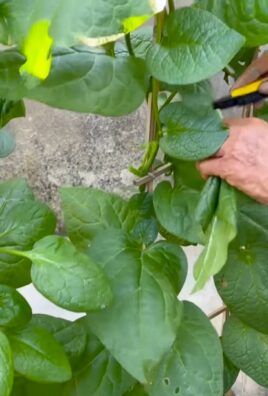
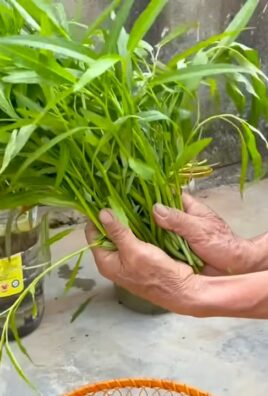
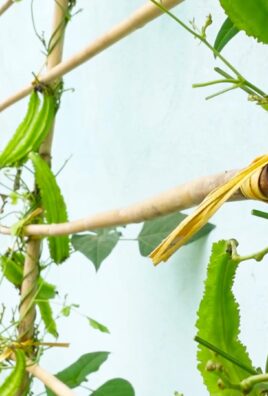
Leave a Comment